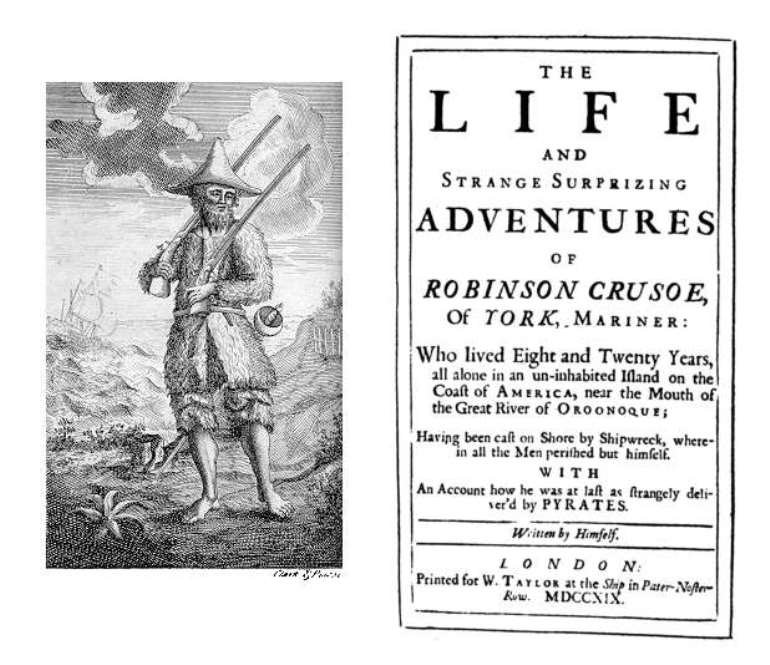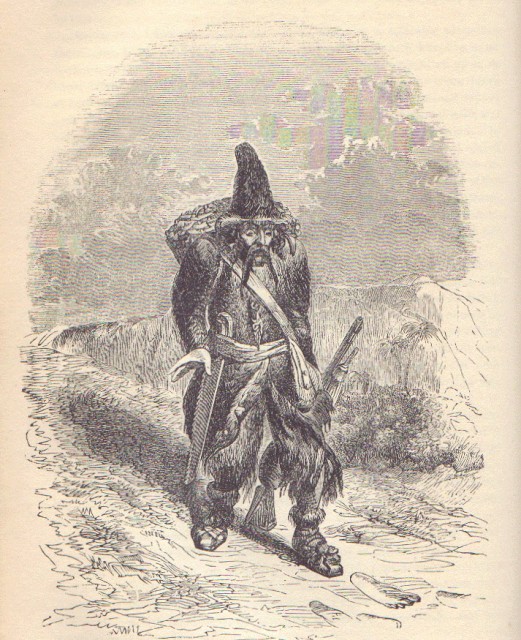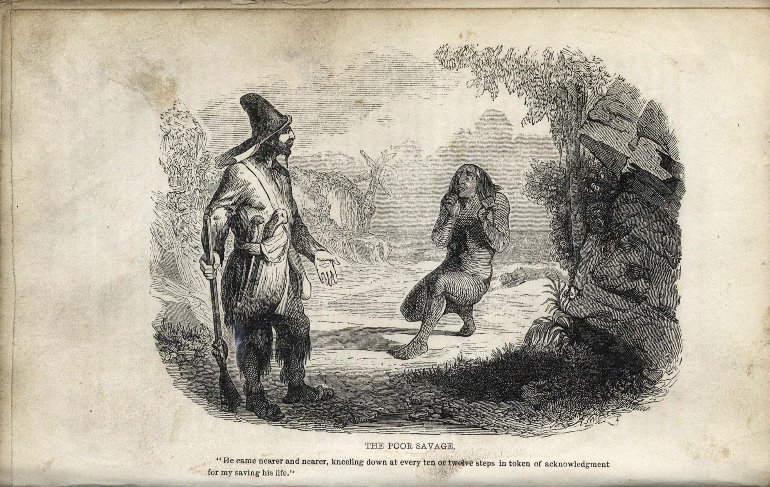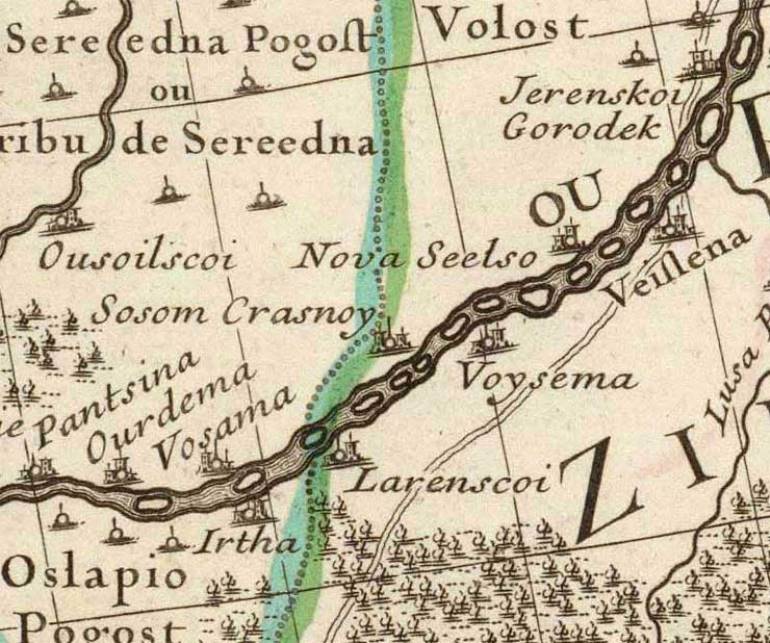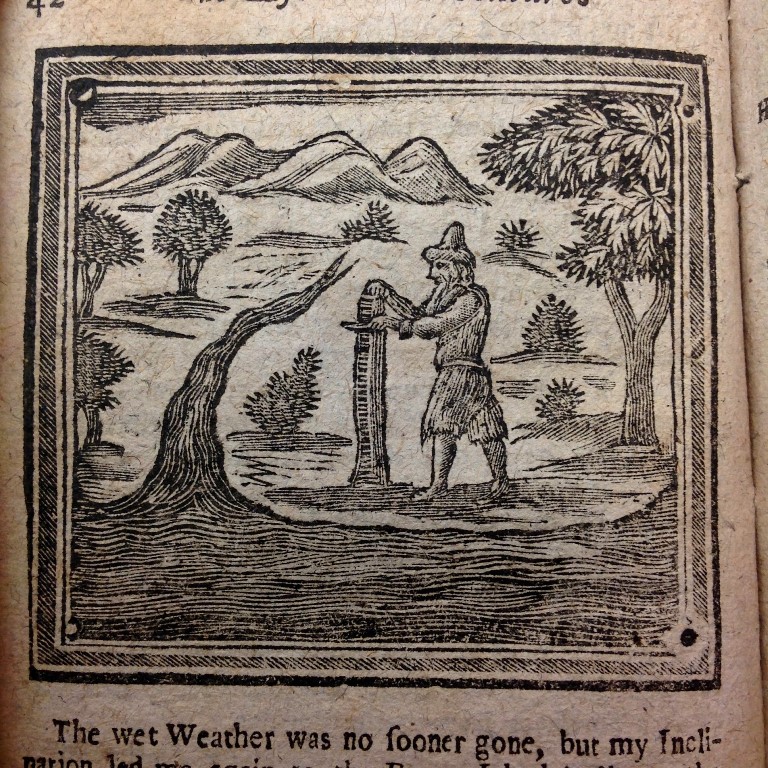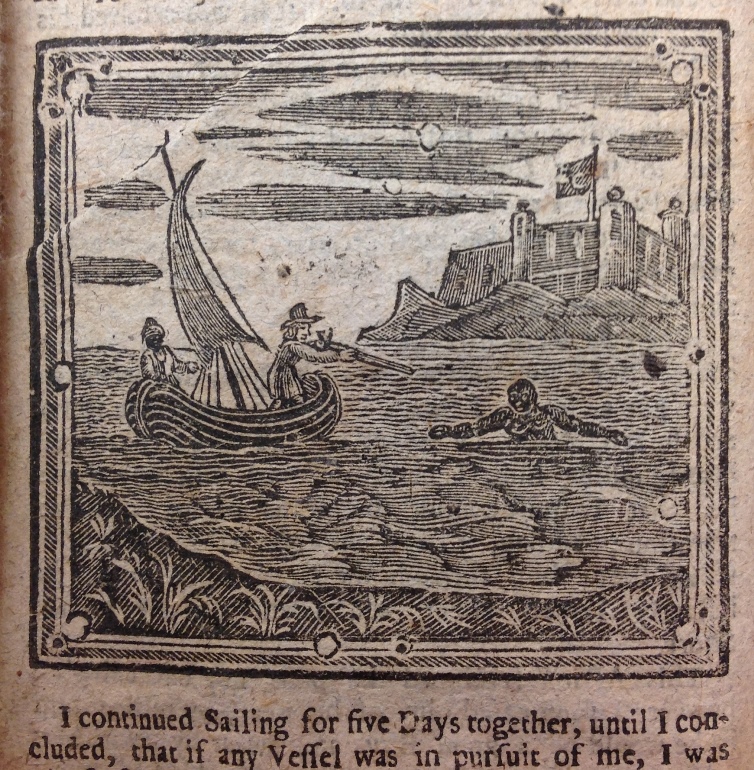Sergei Vinogradov
Robinson Crusoe, the first edition, 1719
Robinson Crusoe is 300 years old. A novel by Daniel Defoe, an English writer, about a traveler who spent 28 years on a desert island was published in April 1719. The novel became the classics of world literature, which cannot be said about its sequel published in August 1719. There Defoe sends his central character to Russia ruled by young Peter the Great. According to the story, Robinson spent more than two years in Russia. He lived in Tobolsk and Arkhangelsk, and then he went back to his home land.
Speaking through his character, Daniel Defoe thanked the Czar of Moscow (the story is set before construction of St. Petersburg) for bringing civilization to the barbarian Siberian peoples. However he also criticized him for exiling nobles being out of favor to uninhabited eastern borders of the empire. It may have happened that Defoe used his novel to engage in written controversy against Russian diplomats, whom the writer, having access to the court, could meet in 1698 during the Grand Embassies of Peter the Great.
Fairy-tale and facts
The Farther Adventures of Robinson Crusoe did not become popular either in England, where it had been written, or in Russia, which had been the scene of a significant part of the work. The novel was first published in Russian in 1935, and 36 years later it was published again after being retold with some narration details omitted. The work did not really spark interest in literary critics and historians, but nowadays it has unexpectedly attracted attention of geographers and travelers – this is what we will be taking about below.
Classic illustrations by Jean Grandville
Yet, The Farther Adventures of Robinson Crusoe is a remarkable literary monument that captured knowledge of an educated Englishman of the early 18th century about contemporary Russia. After all, a hundred years earlier, William Shakespeare, who mentioned Russia and the Russians in his plays more than once, could dress up his characters in sirwal and say that such outfit was “Muscovite costume”, as well as to give the Russian Emperor’s daughter such name as Hermione. That happened due to lack of truthful information about Russia.
"Shakespeare was a man with open eyes and the whole world was interesting for him," Igor Shaytanov, a professor and the head of the department at the Russian State University for the Humanities, told the Russkiy Mir. “He almost certainly saw the Russian embassies, which visited the court of the Queen Elizabeth in the 1590s. It is very likely that Shakespeare was also familiar with the Englishmen notes on Russia, for example, the Fletcher’s notes, in which the author depicts Russia as a barbaric country.”
At the time of Daniel Defoe, there were considerably more books and “notes” available; and from historical and geographical points of view the second novel about Robinson Crusoe is almost flawless. It is obvious that Defoe used information from travelers' books or their stories when he described customs of the peoples inhabiting Siberia, peculiarities of the local climate and outfits of the locals.
In the Siberian woods
Now let us talk about the story. Having returned from a desert island, Robinson Crusoe got married, had children and became a wealthy man. But he quickly realized that such life did not make him happy. He had been happier on the island than in the role of a rich British landowner. After the death of his wife, Robinson travels by ship to Brazil and requests to drop anchor near the island where he spent half of his life.
Now the island is full of settlers – Spanish, Englishmen and savages. Robinson Crusoe acts as a peacemaker: he dampens out controversies between ethnic groups and helps island residents to establish mutually beneficial cooperation. After that, he departs home, losing his faithful friend Man Friday in battle with his fellow tribesmen on the way. Due to the conflict on the ship, Robinson is dropped off in the Bay of Bengal.
Classic illustrations by Jean Grandville
After walking and travelling through China and visiting Beijing, the traveler comes to Russia. And right during his first days there he is attacked by local residents. “Traveling around the Moscow dominions, we were very visibly obliged to the care the Czar has taken to have cities and towns built in as many places as it is possible to place them, where his soldiers keep garrison, something like the stationary soldiers placed by the Romans in the remotest countries of their empire,” says Robinson. “However, wherever we came, though at these towns and stations the garrisons and governors were Russians, ... yet the inhabitants were mere pagans, sacrificing to idols, and worshipping the sun, moon, and stars, or all the host of heaven; and not only so, but were, of all the heathens and pagans that ever I met with, the most barbarous, except only that they did not eat men's flesh like barbarians in America.”
Robinson Crusoe arrives to Tobolsk, where he decides to wait for winter to pass, which lasts for 8 months. Here he studies maps aiming to choose a route to England. He has two options - the northern route through Arkhangelsk or the north-western one through Yaroslavl and Narva. Crusoe, who spent half of his life on a tropical island, writes about the Siberian winter a lot and in style. “The frosts were so severe that it was impossible to go outside without being wrapped up in a fur coat and without covering the face with a fur mask or rather a hood with three holes only: for the eyes and for breathing,” the traveler says. “The rooms were warm, as the doors in the houses there were closing tightly, the walls were thick, the windows were small with double glazing. Our food consisted mainly of air-dried reindeer meat, rather good bread, various air-dried fish, and occasionally fresh mutton and buffalo meat, quite pleasant to the taste.”
In Tobolsk, he met with noblemen exiled to Siberia as prisoners of State. Robinson mentions their education and knowledge of languages. The prince Golitsyn becomes one of the novel’s characters. The writer calls him "the Czar’s minister." When the prince praises the Moscow Czar, his power and vastness of dominions, and Robinson interrupts him with confession that he was a much more powerful ruler on his island. The traveler offers the prince assistance in escaping, but the latter refuses perceiving the futility of the attempt.
Robinson’s Map
The novel ends with a brief description of Robinson's journey from Tobolsk to Arkhangelsk. The writer nearly completes one of the paragraphs with names of rivers and settlements only; some of them cause confusion among readers and researchers.
Delisle's map
“In five days more we came to Vestima, upon the Vychegda River, and running into the Dwina: we were there, very happily, near the end of our travels by land, that river being navigable, in seven days' passage, to Archangel,” tells Robinson. “From hence we came to Yarensk, the 3rd of July; and providing ourselves with two luggage boats, and a barge for our own convenience, we embarked the 7th, and arrived all safe at Archangel the 18th; having been a year, five months, and three days on the journey, including our stay of about eight months at Tobolsk.”
Along with Solikamsk and Tyumen, Robinson mentions the Kirsha River and the “large Russian city of Ozomya”, which are unknown to historians and geographers. However, the abundance of hazy place-names did not prevent Pavel Mityushev, a member of the Russian Geographical Society, from recreating the map which reflects Robinson Cruzoe’s travelling across Russia.
“We have still been unable to identify Kirmazinskoy, the Kirsha or Ozomya,” the researcher tells us. “Of course, there is a temptation to match the “Kirsha River” with the Bolshoy Kirs River (flowing through the city of Kirs in the Kirov Region), and Ozomya with the village of Sozimsky in the Kirov Region, but we will not do that.”
According to Mityushev, Defoe, unlike his most famous character, was not a traveler; the farthest trip he ever took was to Spain. And it means that he plotted the route for Robinson from Solikamsk to Arkhangelsk by maps, which he could have at his disposal.
Robinson Crusoe, the first edition
The meticulous researcher studied the most common maps of Russia, which existed at the beginning of the 18th century, and found Kirsha and Yarensk on the map plotted by Guillaume Delisle, a Frenchman. Names of settlements were corrupted when other map compilers rewrote them.
“Thus, the Robinson route through the land of Komi was as follows. He left Solikamsk, traveled to south of Kirsa (on the Delisle’s map), near the village of Voysema went to the Vychegda river and set off to Arkhangelsk by a barge from the village of Larenscoi (in the area of the current Urdoma pier),” Pavel Mityushov points out. “Kirmazinskoy and Ozomya are not on the Delisle’s map. We tend to classify these two place-names as fictional.”
On the way of Robinson Crusoe
However, sometime a vivid fiction is more valuable than lifeless pedant truth. Discussion on the Robinson Crusoe’s route is a popular topic on Internet forums that unites those enthusiasts who enjoys travelling over rough and smooth. “The idea to go along this route is akin to dashing and partly insane ideas of Jules Verne’s characters, just like a round-the-world trip along 37th circle of latitude. But, sure thing, there is something about it,” a moderator of one of such discussions wrote.
However, Robinson is much easier to be found in Russia than Jules Verne’s Captain Grant. That is all because it has been 15 years since he returned, and not alone. In 2007, a monument to Robinson Crusoe and Man Friday, who did not make it to Siberia with his friend, was erected in Tobolsk. Local activists have been nourishing the idea to install a sculpture of the fictional traveler in Arkhangelsk for more than ten years. Some efforts for the idea’s implementation have already been made: annual tourist gatherings are held near Arkhangelsk; and the river route of the same name has been laid.
Robinson Crusoe, the first edition
They want Robinson Crusoe to become a guide for regional tourism in the Komi Republic. Journalists and historians have found one settlement (Ust-Vym), which is not mentioned in the Defoe’s novel, but it is located in the area where Robinson was brought by the writer's imagination.
“If we set up production of Robinson themed souvenirs or magnets, they would absolutely not lie around unsold,” says an author of the Respublika, a local newspaper. “Guests from Moscow and most of the major cities in the country cannot boast that Robinson himself visited their homeland. And Robinson’s Island is too far away. Yet, here, within easy reach, you can buy a fur hat or umbrella “a la Robinson” and boast that you have personally followed the path of Robinson Crusoe.”

